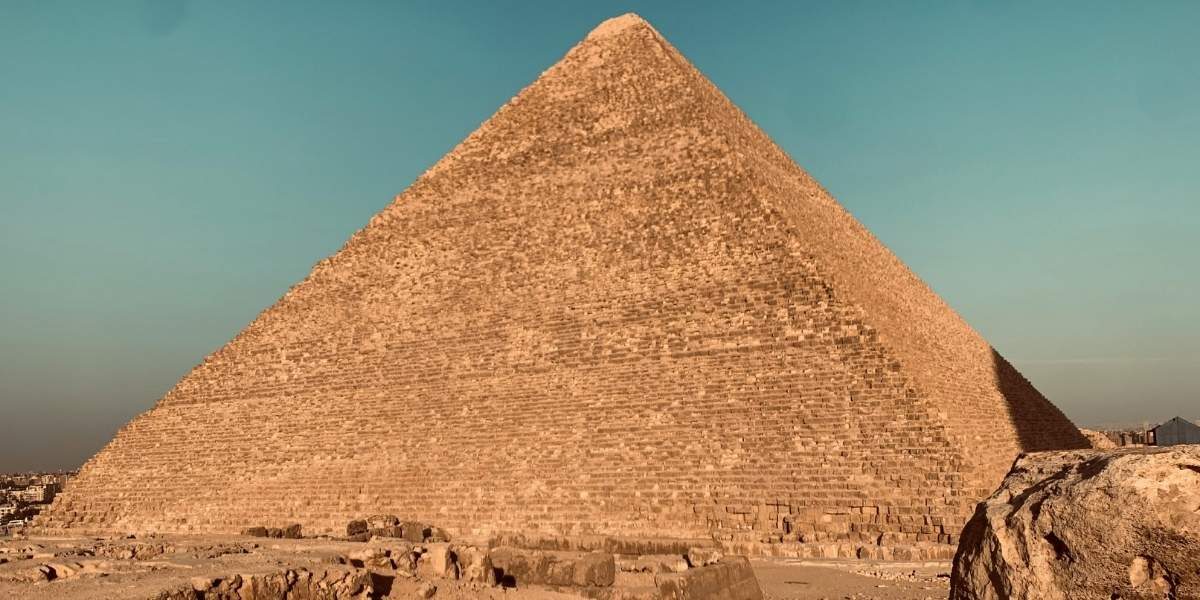The Great Pyramid of Giza: A Monument to Ancient Engineering
The Giza Plateau is home to one of the most awe-inspiring structures ever built by human hands—the Great Pyramid of Giza. It is the last remaining wonder of the ancient world, standing tall and steadfast as a symbol of ancient Egyptian ingenuity. For over 3,800 years, this monumental tomb for Pharaoh Khufu has captivated visitors with its sheer size, precision, and mystery, continuing to inspire admiration and questions about the ancient civilization’s engineering prowess.
Read Also: Vintage Fashion: Timeless Style for the Modern World
The Construction of the Great Pyramid of Giza
Built around 2580 BCE during Egypt’s Fourth Dynasty, the Great Pyramid of Giza was designed as a tomb for the pharaoh Khufu (also known as Cheops). With an estimated height of 481 feet (146.6 meters) at its completion, it remained the tallest man-made structure in the world for over 3,800 years. The pyramid’s construction involved millions of limestone blocks, each weighing several tons, with the total weight of the structure estimated at 6.5 million tons.
Despite the advanced technology available during the time, the construction of the Great Pyramid of Giza remains an architectural feat. Researchers and historians continue to debate the methods used to transport and position the massive blocks. Many believe that a combination of ramps, levers, and skilled laborers helped lift the stones into place, but the exact process is still not fully understood. The scale of the construction is so precise that even modern engineering would face challenges replicating the accuracy of the pyramid’s design.
The Precision and Alignment of the Giza Pyramid
One of the most remarkable features of the Great Pyramid of Giza is its alignment with the stars. The pyramid’s sides are aligned almost perfectly with the cardinal points—north, south, east, and west—an achievement that would have required an advanced understanding of astronomy and geometry. Some theorists believe that the ancient Egyptians used the stars to guide the construction of the pyramid, aligning the structure with the positions of certain stars in the sky. This alignment suggests that the ancient Egyptians had a profound understanding of celestial mechanics long before the advent of modern astronomy.
In addition to its alignment, the precision of the pyramid’s dimensions is astonishing. The edges of the pyramid’s base are nearly perfectly straight, and the angles of the sides are remarkably uniform. The Great Pyramid is not just an architectural marvel; it is also a testament to the advanced mathematical knowledge of its builders. The proportions of the pyramid are said to reflect the golden ratio, a mathematical concept that has been studied for centuries for its aesthetic appeal and significance in nature.
The Giza Plateau: A Complex of Wonders
The Great Pyramid of Giza is not the only pyramid on the plateau. Surrounding it are two other pyramids—the Pyramid of Khafre and the Pyramid of Menkaure—along with the enigmatic Sphinx, a colossal limestone statue with the body of a lion and the head of a pharaoh. Together, these monuments form one of the most recognizable archaeological sites in the world.
The Pyramid of Khafre, the second-largest pyramid at Giza, stands next to the Great Pyramid. It is distinguished by its remaining casing stones at the top, which give visitors an idea of what the original pyramids might have looked like in their complete form. The Pyramid of Menkaure is the smallest of the three, but it still stands as an impressive structure in its own right.
The Sphinx, which guards the entrance to the pyramid complex, is another mystery that has intrigued historians and archaeologists for centuries. Carved from a single piece of limestone, the Sphinx is believed to represent the face of Pharaoh Khafre, although its exact origins and purpose remain subjects of debate. The Sphinx has weathered centuries of erosion and damage, yet it remains an enduring symbol of ancient Egypt’s power and majesty.
The Legacy and Significance of the Great Pyramid of Giza
The Great Pyramid of Giza was originally covered in smooth, white limestone casing stones that reflected the sun’s rays, causing the pyramid to shine like a beacon. While most of the casing stones have been removed over time, the pyramid’s enduring presence continues to captivate people from all over the world. Its scale, precision, and historical significance make it one of the most iconic structures on Earth.
As the only surviving wonder of the ancient world, the Great Pyramid serves as a reminder of the grandeur and innovation of ancient Egyptian civilization. It embodies the spiritual and religious beliefs of the time, acting as a tomb for Pharaoh Khufu and a symbol of his journey to the afterlife. The pyramid’s placement on the Giza Plateau, along with its alignment with the stars, suggests that it had astronomical and symbolic importance, potentially marking the connection between the pharaoh and the gods.
The Pyramid’s Enduring Mystique
The Great Pyramid of Giza is surrounded by mystery. While modern archaeology has uncovered many details about its construction and purpose, there are still unanswered questions. For instance, how were the massive stones transported with such precision? Were there hidden chambers within the pyramid? What significance did the alignment with the stars hold for the ancient Egyptians? These questions continue to captivate scholars, archaeologists, and visitors alike.
Despite centuries of exploration and study, the Great Pyramid of Giza remains an enigma—its secrets hidden beneath the sands of time. Some believe that future discoveries might reveal even more about the pyramid’s construction and purpose, adding to the fascination that continues to surround this ancient wonder.
Read Also: Why CEOs Should Prioritize Reducing Carbon Footprints: A Path to Sustainability and Profitability
The Pyramid Today: A Modern Wonder
In addition to its historical and cultural significance, the Great Pyramid of Giza remains a popular tourist destination, attracting millions of visitors each year. People from around the world come to stand in awe of the pyramid’s size, marvel at its construction, and attempt to unlock its many mysteries. As one of the most important archaeological sites on the planet, it continues to inspire awe and curiosity in all who see it.
In an age where modern engineering has achieved great feats, the Great Pyramid of Giza serves as a reminder of what humans were capable of achieving over 4,000 years ago. It is a testament to the ingenuity, creativity, and resilience of the ancient Egyptians—a people whose achievements still reverberate through history.








